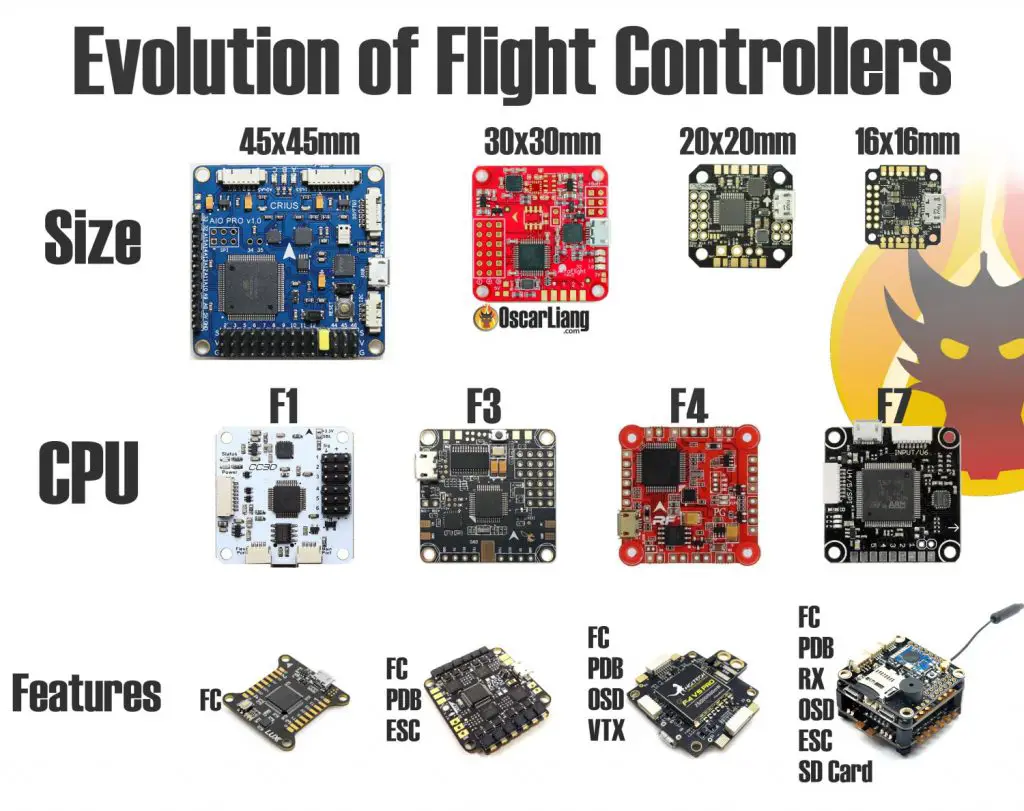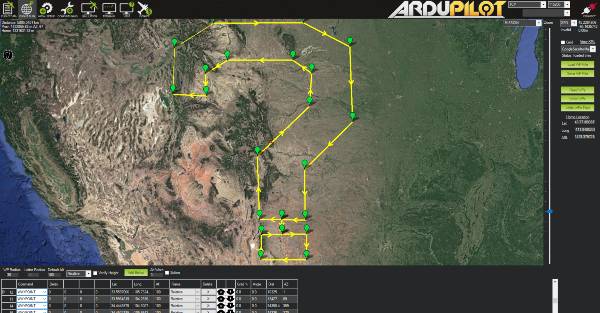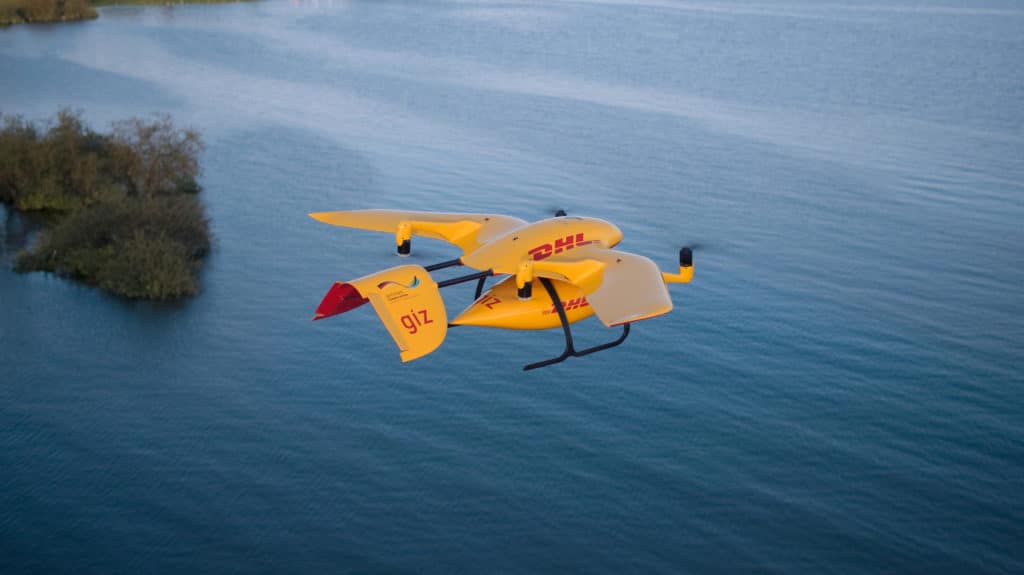Drones are becoming increasingly common in our skies. It might surprise you to know that although the majority of recreational drones are remotely piloted by a human, the commercial sector is moving towards autonomous flight where drones are flown on autopilot.
Now there are two ways to interpret the word autopilot. When drones fly on ‘autopilot’ we refer to this now as ‘autonomous flight’.
Alternatively, an autopilot refers to the software that controls the functions of the drone, generally to maintain level flight. Today, we’ll focus on the first definition.
Unmanned Aircraft Systems (UAS) can be separated further into two sub-categories. Remotely Piloted Aircraft (RPA) or Autonomous Unmanned Aerial Vehicle (UAV). RPA are considered manually controlled aircraft. It’s what you would expect, a person with a remote controller (radio transmitter) in control of what the drone is doing.
Autonomous UAVs are programmed to fly a mission with pre-determined parameters. It might not even involve a traditional remote controller, but a computer or computer-like interface. This method of control is generally referred to as the Ground Control Station (GCS).
Some drones are purely autonomous with no option for control, but those drones are rare and complex. More commonly, drones are remotely piloted with the added ability to fly autonomous missions through the use of software.
In my career I’ve worked with various levels of flight autonomy. In this article, I’ll share some of my thoughts and experiences on this aspect of the drone industry.
But first, let’s get the main question out of the way.
Do Drones Have Autopilot?
Drones have 2 methods to fly on autopilot (more commonly referred to as autonomous flight). Firstly, a drone can use GPS to fly pre-programmed missions without a pilot. The other method is using visual sensing. Cameras, sensors and software allow a drone to follow a target or navigate on autopilot.
That’s the simple version. I’ll break it down a bit further to see where this technology currently is used, and how you can join the trend of becoming relegated to mundanely monitoring flight diagnostics and airspace activity until you slowly lose hope and resent the technology you once loved… um…where was I?…. Yes, autonomy!
Let’s look at some of the factors that are involved in today’s age of autonomous flight.
Flight Controllers

Flight controllers are like the brain of the drone. There has been rapid advancements in this technology that have allowed for the current climate of autonomous flight.
Flight controllers (FC) use inertial-measurement-units (IMU) to stabilize and control flight characteristics. It monitors speed, altitude and angle amongst other things.
With this technology becoming cheaper and smaller, we are starting to see it easily implemented in drones across the board. Even a drone of less than 100 grams can have many of the features that can allow it to perform autonomous flight.
Here are some components of the FC that allow for it to monitor and control its flight parameters:
- Accelerometer – This component monitors acceleration and speed
- Barometer – This measure air pressure which translates to altitude
- Gyroscope – This measures the angle of the drone to maintain level flight
- Magnetometer – This unit functions as a compass, tracking the direction of flight or the direction the drone is facing – also known as ‘heading’
GPS-based Autonomous Flight
Advancements in GPS technology is the main reason why drones are capable of such a wide range of autonomous missions. Although the flight controller can keep the drone in the air, the GPS allows predetermined flight routes and mission objectives.
Without GPS, we would simply be telling the drone to fly in random directions. With GPS, we can program the drone to fly to exact positions.
In combination with satellite maps, we can set coordinates or ‘waypoints’ that the drone should fly to during its mission. Here is an example of what a planned autonomous mission might look like.
As you can see, there are various numbered points that the drone will fly to, in ascending order, before returning back to it’s take-off or ‘home’ point.
This precision in flight planning is what has allowed industry sectors like drone deliveries to be possible, although many more sectors have benefited greatly by this advancement.
For even greater accuracy, survey maps use the addition of GPS equipment on the ground as a reference point. These are known as Ground Control Points (GCP).
GPS Module
GPS modules are very important for autonomous flight, however they aren’t very expensive or large. You might be surprised just how small and cheap they can get.
The BN-180 Module is found in some of the newly created range of sub-250 gram long-range FPV drones. The module is only 18 millimeters (0.7 inches) wide, and weighs less than 5 grams.
GPS modules are generally mounted at the top facing section of a drone. On most consumer and commercial ready-to-fly drones, that would be on the top. As the drone often conducts level flight and position hold hovers.
For FPV drones, the GPS modules are mounted on the rear. This is because FPV drones often fly at maximum pitch angle which lifts the tail end of the drone upwards towards the sky.
Here is a side by side comparison of the two types of mounting styles.


Flight Software
The final component to allow for autonomous missions and mission planning is the software. You will need an easy-to-use interface to make all your planning decisions.
Now there are a large number of different software options, but I’ll cover a few of the ones that I have experience with.
Drone Deploy
If you’re using a DJI drone, one of the easiest ways to plan missions is to fly your drone whilst connected to an app. Although you’d most commonly fly with the DJI GO application, you can use other apps like Drone Deploy.
Simply turn on your drone with your controller connected to a phone or tablet, and then open the drone deploy app.
You can easily plan using the touch interface when you’re on the go, by moving and adding waypoints as needed. Or you can use the desktop version to plan the mission beforehand, and then simply commence the mission when necessary.
You can set all the mission parameters super easily and drone deploy also offers a way to process the data in the cloud. They do most of the work for you.
Ardu Pilot Mission Planner
Another great option is Ardu Pilot’s Mission Planner software. The mission planner is a far more complex tool and can be used for a variety of drone types.
However it is not only limited to multi-rotor drones, it can plan fixed wing, helicopter and even ground autonomous missions as well. So keep that in mind if you have other forms of data collection.
Ardu Pilots Mission Planner is quite a versatile piece of software. Here’s a summary of its capabilities:
- Plan autonomous missions using waypoints
- Set flight parameters
- Analyze flight data
- Simulate missions
- Configure the following
- Drone settings
- Radio Transmitter (TX)
- GPS Inject
- Antenna settings
- Video & On screen Display (OSD)
Autonomous Flight via Visual Sensing
Another form of autonomous flight is sometimes referred to as visual sensing. This is a camera-based system that is used to navigate the drones flight path.
The drone uses visual data from the camera in conjunction with specialised software to analyze its environment and fly appropriately. This technology has existed in drones for the good part of the last decade, however it is still not perfected.
DJI Active Track
The most common use of this is with some of the Intelligent Flight modes, found in the DJI GO app. The ‘Active Track’ function uses the visual data from the camera to follow a subject.
The drone uses image recognition to lock onto a target, then uses its obstacle avoidance and proximity sensors, it will fly autonomously in a way to keep the subject it is tracking within the frame of the camera.
This technology is good and functional, but it has its limitations. When a subject is moving too fast, or visual contact is broken or obscured the drone will cancel the function. At other times, obstacle avoidance can fail to detect objects for a variety of reasons.
Some of the most common DJI drones that can use this function include:
- Mavic Mini 3
- Mavic Air 2
- Inspire 3
- Mavic 3 Pro
Skydio 2
Skydio is probably the best example of this form of autonomous flight. The Skydio 2 is at the forefront of the technology. It’s probably the reason it seems to always be on backorder on their website haha.
Their goal was always trustworthy autonomy. The drone does not simply have just the one typical forward facing camera that helps it navigate. Instead, the Skydio 2 uses 6 cameras all with 4K resolution in order to build a map of its surroundings.
It uses this map to fly around and through obstacles wherever it can to achieve its desired objectives. I can try to do it justice, but I think their own YouTube advert speaks volumes on their technology. Video below.
I think this form of autonomous flight has amazing potential, however the technology will need to be a lot better than it currently is. With rapid improvements, I’m very curious to see the future applications of this type of drone, especially in an indoor setting.
Final Thoughts
As the drone industry expands, regulators are having a tough time keeping up with the innovations. Drones have a range of safety issues which is why the aviation authorities around the world have been slow and reluctant to ease regulation.
Human factors or human error is the main cause of problems in the aviation sector.Having this issue addressed with autonomy allows for a big change in the regulatory environment.
I anticipate that we will see even greater change to come over the next few years as autonomous flight becomes safer and more commonplace. I personally can’t wait to see the possibilities.
If you’re curious to learn more about drones, one of the most asked questions is about the short flight times most drones have. I give you tips to increase your flight times in my other article here, Why Do Drones Have Such A Short Battery Life?




